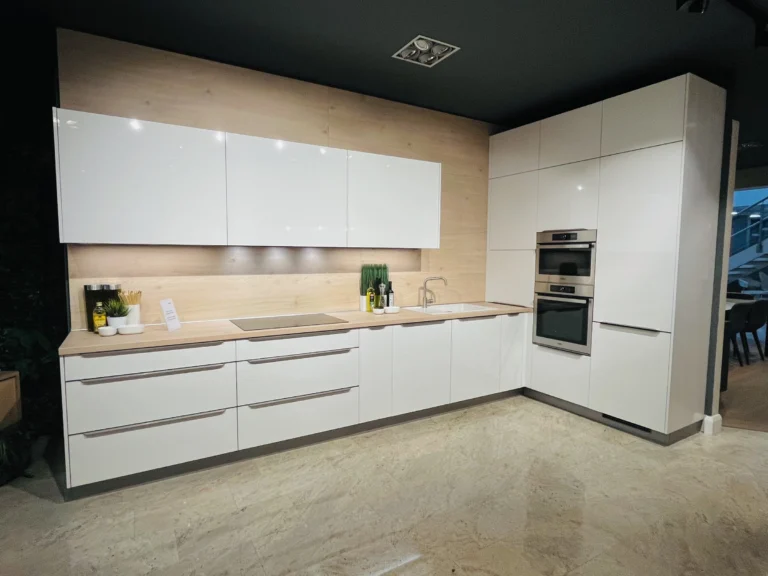If you’re planning a kitchen renovation, there’s a good chance you’ve found yourself asking: Do I install the appliances before the cabinets, or the cabinets before the appliances? It’s a small detail, but it can have a surprisingly big impact on your schedule, budget, and final result.
The truth is, the order matters — and getting it right will save you headaches later. At Kube Interiors, we’ve walked alongside countless homeowners in Ireland through their renovations, offering both expert advice and the kind of steady support that makes the whole process feel easier. So, let’s explore the options, the reasoning behind each, and the approach we’ve found works best for most kitchens.
Why the Installation Order Matters
Think of your kitchen as a carefully designed puzzle. Your cabinets and appliances are two of the biggest pieces, and they need to work together seamlessly. The right installation order ensures:
- A flawless fit – no awkward gaps or uneven lines
- Protection for your investment – avoiding scratches, dents, or structural damage
- Efficient workflow – for everyone involved, from electricians to fitters
Get the sequence wrong, and you could face delays, costly modifications, or the frustration of appliances that simply don’t fit where they should.
Installing Appliances First
Some homeowners think installing appliances first makes sense, especially if they want cabinets custom-built around them.
Advantages:
- You can confirm the exact measurements of each appliance on site.
- Built-in ovens, fridges, or dishwashers can be positioned precisely before cabinetry is cut or installed.
Drawbacks:
- Appliances risk damage during cabinet installation.
- Large items in place can make it harder for installers to work efficiently.
- If your appliances arrive late, it can halt the entire renovation timeline.
It’s a little like moving in your furniture before you’ve painted the walls — possible, but usually not the smoothest route.
Installing Cabinets First
For most modern kitchens, installing cabinets before appliances is the standard approach.
Advantages:
- Cabinets define the exact spaces into which appliances will fit.
- Worktops can be measured and cut without having to work around heavy appliances.
- Less risk of appliance damage during the build process.
Drawbacks:
- Measurements must be spot-on from the start.
- Appliances should be ready to install soon after cabinets go in to keep the project on track.
This method works best when every detail is planned in advance — which is where having a dedicated kitchen specialist makes all the difference.
The Kube Interiors Way
At Kube Interiors, we approach every kitchen renovation project as a collaboration. We’re not just ticking boxes on a checklist; we’re helping you create a kitchen that works beautifully from day one. Our installation sequence looks like this:
- Design Consultation – We sit down together to finalise your layout, cabinet sizes, and appliance choices.
- Appliance Ordering – We recommend securing appliances early so they’re ready for installation when needed.
- Cabinet Installation – We fit your base and wall units with precision, creating a perfect framework.
- Worktop Templating and Fitting – Measured to the millimetre for sinks, hobs, and other integrated elements.
- Appliance Installation – Carefully slid into place, connected, and tested for a flawless finish.
By doing it this way, we keep the process efficient and reduce the chance of costly surprises.
When Appliances Might Go in First
While cabinets-first is our go-to, there are exceptions — and this is where your installer’s experience really counts.
- Integrated Appliances: Some built-in fridges, ovens, or dishwashers need partial installation alongside cabinets to ensure perfect alignment with door panels.
- Gas Hobs: These may require positioning before worktops go on to allow for secure pipework connections.
- Large Range Cookers: Sometimes it’s easier to place these before adjacent cabinets are fitted, avoiding awkward manoeuvring later.
In these scenarios, we’ll coordinate carefully with all trades so every element comes together without a hitch.
Tips for a Smooth Installation
- Confirm appliance specs early. Don’t leave choices until the last minute — even small measurement differences matter.
- Plan for ventilation and connections. Make sure you know where gas, water, and electric points will go before fitting starts.
- Protect your appliances. If they arrive before cabinets are installed, store them safely to avoid accidental damage.
- Communicate with your installer. A good renovation partner will help you avoid sequence mix-ups and timeline clashes.
Your Kitchen, Your Way — With the Right Guidance
Renovating your kitchen is an exciting opportunity to shape the heart of your home. The order in which you install your appliances and cabinets might feel like a small detail, but it plays a big role in how smooth your renovation will be.
At Kube Interiors, we combine the warmth of a trusted companion with the precision of an experienced consultant. We’ll guide you through every step — from the first design sketch to the final appliance connection — ensuring your new kitchen is not just beautiful, but perfectly functional from the start.
Meta Title:
Meta Description:


